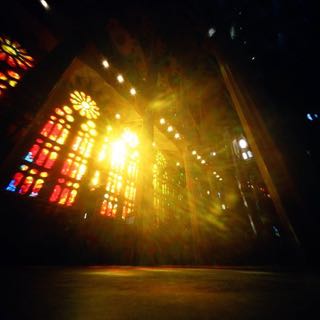Summer is basically over, and if you’re like me, you’re damn happy for it too! Something about the steady march towards winter sets the senses alive. So let’s capitalize on the sense of invigoration.
Here at ƒ/D, we’re all about inspiring you to reach for the pinhole camera and gain perspectives you didn’t have before. In that vein, I have assembled an assignment, if you will, for pinhole newbies and vets alike: 12 shots to stretch out your creative brain! Why 12? Cause there’s 12 exposures on a 120 roll when shooting in 6×6. (As editor I reserve the right to be arbitrary haha!)
Don’t try to do all of these on one roll. Unless you hate yourself. Or you’re just so creative you make the rest of us sick. Cheers!
Handheld
Have you been using a tripod all the time? Or always setting your camera on a sturdy surface? You don’t know what you’re missing! Examples: Lena Källberg’s Decisive Movement
[singlepic id=470 w=600]Mickey Skipping Stones, ©Kier Selinsky 2016[/singlepic]
Double Exposure
Double exposures can be completely unpredictable, at least until you get a good amount of practice in. But they’re always joyful! Look for highlights in one shot to fill in the shadows of another. Examples: On Travel – Markus Kaesler
Stepped Exposure
Do you ever feel like you’re wasting an opportunity when you progress the roll one whole exposure? Sometimes, you’re right. To execute a stepped exposure, advance the film a fraction of the distance to the next frame, take another exposure, and repeat until your film indicates you’re at the next frame (don’t forget to advance to the next frame!). This technique often works well with cityscapes and other scenes with lots of lines. Example:
[singlepic id=469 w=600]City Step, ©Kier Selinsky 2016[/singlepic]
Sun flare
Sun flare is a truly unique pinhole effect. The refraction of sunlight causes a ring of light on the film that can be very flattering to some scenes if used right. To get the effect properly, get the sun off to the side, just at the edge of the frame or even just outside the frame. If you shoot the sun straight on, you’ll get a starburst, but not a flare. Example: Get Inspired – Poppies & Flare
Relative Movement
Moving the subject and camera in relation to each other can create an extremely dramatic scene. In a previous article, I described it as a way to get depth of field in your pinhole photos. And Howard Moiser has built a fine catalog of such imagery. Example: Howard Moiser – Relative Movement
Free Movement
Contrary to relative movement, free movement is where only the camera or the subject is in motion. I suppose they could be both in motion so long as they’re not moving together. In any case, the effect is lots of linear streaking. Examples: several fine examples in the May 2016 Gallery
Light painting
Light painting is a technique that is applied very often in other forms of photography. One bonus of pinhole is that it’s easier to pull off light painting during the daytime, which can bring a whole new suite of possibilities to your light painting desires. Example: Get Inspired – Pinholeshot
So Close
With a near infinite depth of field comes a remarkable ability to get up close. In addition, many pinhole cameras have a super wide angle, exaggerating the close up effect. Use this perspective to your advantage to find new ways of looking. Example:
[singlepic id=343 w=600]Smoked Ribs, ©Kier Selinsky 2016[/singlepic]
Yet so far away
Create a big sweeping landscape or seascape with that wide angle pinhole and details just wash away. It’s a great way to achieve zen like simplicity and concentrate on major shape. Example: Paul Bender’s Bear Creek Lake Park shared in Inspiration Week of 5/16
Multi-lapse
Multi-lapse is a technique I’ve written about before. See, pinhole is what many feel is a sort of time lapse format due to the long exposures. In multi-lapse, you break up the exposure into fractions. This can take an exposure where the people would normally disappear and time your fractional exposures so that people are in the same general spots every time, creating a clustering of movement instead of a disappearing act. Examples: Technique: Multi-Lapse; Studies in Motion – Jean-Christophe Denis
Portraiture
Portraiture is something that often gets left by the way side with pinhole. I’ll admit it’s tough – you have to ask people to stay still, and if they’re at all camera shy, they tend to really not like what a pinhole makes them look like. But there’s definitely some great room for experimentation here. Examples: photos by Bernie Vander Wal and Victor Senkov in Inspiration Week of 8/8
Your favorite lensed photo
Surely you’ve taken some lensed photos. Probably a lot of them. Take a handful of your favorite ones and see if you can recreate them with pinhole. If at first it doesn’t seem like you can, try mixing in techniques like multi-lapse and relative movement. Or try a pinhole take on the subject, bend the “rules”, and get creative! Examples: Send us yours!
[spacer height=”20px”]

